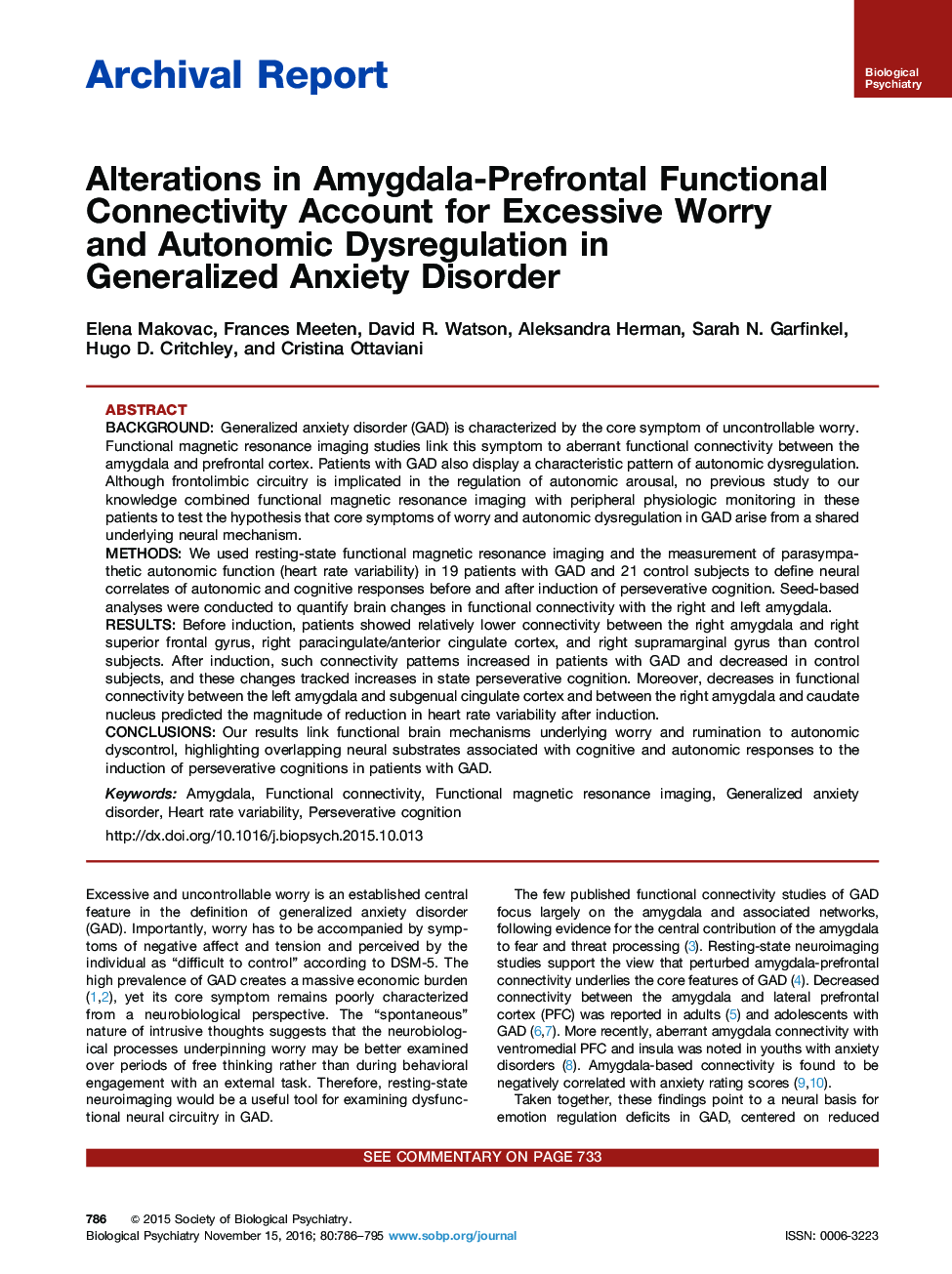| Article ID | Journal | Published Year | Pages | File Type |
|---|---|---|---|---|
| 5720720 | Biological Psychiatry | 2016 | 10 Pages |
BackgroundGeneralized anxiety disorder (GAD) is characterized by the core symptom of uncontrollable worry. Functional magnetic resonance imaging studies link this symptom to aberrant functional connectivity between the amygdala and prefrontal cortex. Patients with GAD also display a characteristic pattern of autonomic dysregulation. Although frontolimbic circuitry is implicated in the regulation of autonomic arousal, no previous study to our knowledge combined functional magnetic resonance imaging with peripheral physiologic monitoring in these patients to test the hypothesis that core symptoms of worry and autonomic dysregulation in GAD arise from a shared underlying neural mechanism.MethodsWe used resting-state functional magnetic resonance imaging and the measurement of parasympathetic autonomic function (heart rate variability) in 19 patients with GAD and 21 control subjects to define neural correlates of autonomic and cognitive responses before and after induction of perseverative cognition. Seed-based analyses were conducted to quantify brain changes in functional connectivity with the right and left amygdala.ResultsBefore induction, patients showed relatively lower connectivity between the right amygdala and right superior frontal gyrus, right paracingulate/anterior cingulate cortex, and right supramarginal gyrus than control subjects. After induction, such connectivity patterns increased in patients with GAD and decreased in control subjects, and these changes tracked increases in state perseverative cognition. Moreover, decreases in functional connectivity between the left amygdala and subgenual cingulate cortex and between the right amygdala and caudate nucleus predicted the magnitude of reduction in heart rate variability after induction.ConclusionsOur results link functional brain mechanisms underlying worry and rumination to autonomic dyscontrol, highlighting overlapping neural substrates associated with cognitive and autonomic responses to the induction of perseverative cognitions in patients with GAD.
